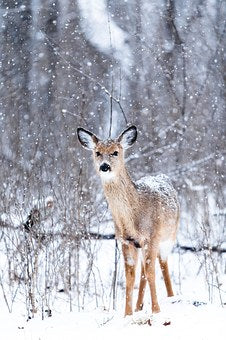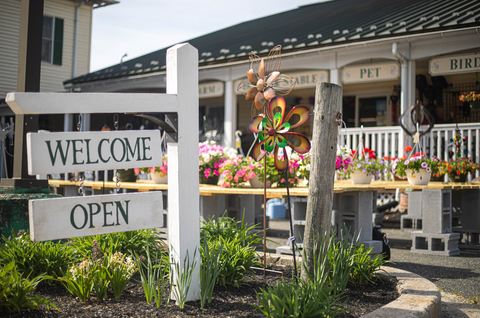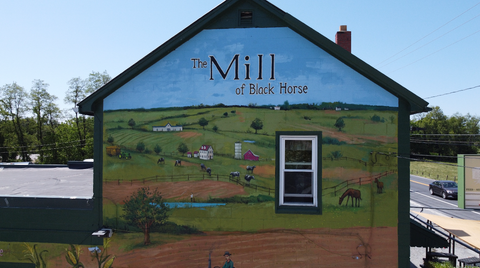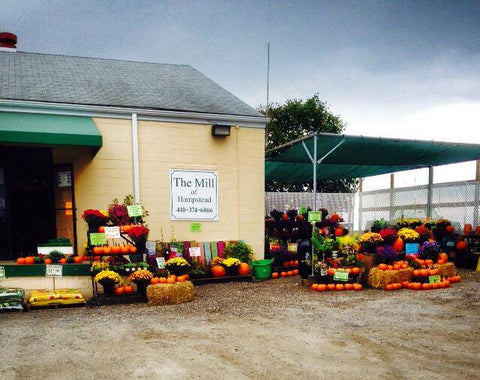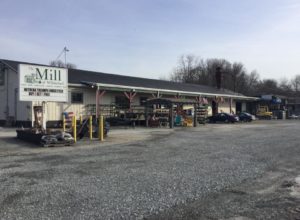Establishing a deer food plot is one of the most effective ways to improve hunting success, promote healthy deer herds, and support local wildlife. As interest in wildlife land management grows, more landowners and hunters are turning to high-quality deer food plot seed to create sustainable, nutrient-rich foraging areas that can be for one season or multiple seasons.
At The Mill, we offer a wide range of specialized seeds tailored to meet the nutritional needs of deer throughout the seasons. Whether you're creating your first plot or refining an established one, understanding which varieties to plant, and when, is key to your success.
Why Plant a Deer Food Plot?
A well-managed deer food plot does more than attract deer. It supports antler development, overall herd vitality, and healthy digestion. These plots also help draw deer away from neighboring properties, giving hunters and wildlife observers a strategic advantage. When properly maintained, food plots can become a long-term part of your land management plan, improving soil quality and supporting other species as well.
What to Consider Before You Plant
Before selecting your deer food plot seed, consider these important factors:
-
Soil Quality: Test your soil for pH and nutrients. Most deer forage crops prefer a slightly acidic to neutral pH range (6.0–7.0).
-
Sunlight Exposure: Depending on the food plot seed, aim for areas with at least 5 hours of direct sunlight per day.
-
Timing: Plant cool-season annuals in late summer/early fall and establish perennials in spring or late summer.
-
Plot Location: Choose secluded, high wildlife traffic spots near bedding cover and away from human disturbance.
-
Plot Size: Even small plots can be effective when seeded and maintained correctly.
Learn more about soil testing and amendments at The Mill.
When to Plant Your Deer Food Plot
Timing varies based on your region and seed type:
-
Spring (March–May): Ideal for long-term perennial mixes, clover, and alfalfa.
-
Late Summer to Early Fall (August–September): Best for cool-season favorites that peak during hunting season such as annuals like turnips, radish, winter peas, oats and rape seed.

Refer to our Deer Food Plot Planting Calendar for a printable seasonal guide.
In the Mid-Atlantic region, planting timelines may shift slightly based on rainfall and average frost dates. Our team at The Mill can help you determine the best timing for your plot.
Top Deer Food Plot Seed Varieties Available at The Mill
We carry a wide variety of deer food plot seed options to suit both fall and perennial plots. Here’s a closer look at some of the most effective varieties:
Purple Top Turnips
Purple Top Turnips are a cold-hardy brassica that offer dual forage, nutritious leafy tops, and starchy bulbs. The tops attract deer in early fall, while the underground roots become sweeter and more palatable after a hard frost, providing valuable forage deep into winter. Ideal for hunters looking to sustain attraction throughout the season.
Planting Time: August–early September
Plot Type: Annual
Benefits:
-
Produces both leafy tops and starchy bulbs.
-
Highly palatable after frost.
-
Great late-season food source.
Daikon Radish
Daikon Radishes are a top choice for improving soil health while supporting your deer food plot. Their long taproots break up compacted soil and add organic matter. The roots become especially attractive to deer after frost, making this seed a strong late-season performer. Fast-growing and highly palatable, Daikon is excellent in fall blends.
Planting Time: Late summer
Plot Type: Annual
Benefits:
-
Deep taproots improve soil compaction.
-
High in energy and attract deer after frost.
-
Great for soil building and forage.
Winter Peas
Winter Peas provide fast-growing, high-protein forage that deer can’t resist. They’re particularly useful in early fall when nutrition is critical before winter. Often used in deer food plot seed blends, they pair well with cereal grains, clover, or brassicas to add variety and improve plot attraction during the hunting season.
Planting Time: August–September
Plot Type: Annual
Benefits:
-
High-protein legume ideal for early-season nutrition.
-
Quick to establish and cold-tolerant.
-
Excellent companion crop with oats or clover.
Kale
Kale is a hardy brassica with excellent cold tolerance. It continues producing leafy, nutritious forage even after multiple frosts. Kale’s resilience and high forage quality make it a reliable choice for late-season hunting plots and fall deer food plots designed to last into the colder months.
Planting Time: August–early September
Plot Type: Annual
Benefits:
-
Very cold-hardy; becomes sweeter with frost.
-
Produces nutrient-dense leafy forage.
-
Good late-season option.
Crimson Clover
Crimson Clover is a quick-establishing, nitrogen-fixing annual that improves soil fertility while attracting deer with its tender, leafy growth. It’s especially valuable in fall blends, offering forage through the first part of winter. An easy grower, crimson clover works well as a standalone crop or companion plant in deer food plot seed mixes.
Planting Time: August–September
Plot Type: Annual (can reseed)
Benefits:
-
Fast germination and nitrogen-fixing.
-
Improves soil health for next season’s crops.
-
Attracts deer from early fall into winter.
Chicory
Chicory is a mineral-rich, deep-rooted perennial known for its drought tolerance and grazing durability. Once established, it offers reliable forage from spring through fall, with a bitter flavor that sweetens over time. Chicory is a top option for long-term deer food plots, especially when blended with clover or alfalfa.
Planting Time: Spring or August
Plot Type: Perennial
Benefits:
-
Deep-rooted and drought-resistant.
-
Rich in minerals and protein.
-
Supports grazing from spring through fall.
Rape Seed
Rape Seed is a high-yielding brassica that grows quickly and offers excellent cool-season forage. Its large leaves are highly palatable to deer and become sweeter after frost. Rape Seed thrives in a variety of soils, making it a flexible and dependable addition to fall deer food plot seed blends.
Planting Time: August
Plot Type: Annual
Benefits:
-
Thrives in cool weather.
-
Develops large leafy growth that deer love.
-
Cold-hardy and high in protein.
Clover
Clover is a foundational component of many deer food plots due to its high protein content, soil-enhancing properties, and multi-season appeal. Once established, clover attracts deer from spring through fall and provides excellent grazing throughout the growing season. It’s often blended with chicory or alfalfa for balanced nutrition and persistence.
Planting Time: Spring or late summer
Plot Type: Perennial
Benefits:
-
High-protein, year-round nutrition.
-
Attracts deer spring through fall.
-
Fixes nitrogen and improves soil fertility.
Perennial Mixes
Perennial mixes combine species like clover, chicory, and alfalfa to provide season-spanning forage and lasting soil benefits. These blends are ideal for landowners seeking low-maintenance plots that return year after year. When well-maintained, they create a reliable, year-round food source that attracts deer consistently while enhancing soil structure and fertility. Perennial mixes are especially valuable for establishing long-term deer food plots with minimal annual replanting.
Planting Time: Spring or late summer
Plot Type: Perennial
Benefits:
-
Blended for multi-season forage.
-
Often includes clover, chicory, alfalfa.
-
Low maintenance and long-lasting.
Alfalfa
Alfalfa is a high-protein powerhouse that supports antler growth, milk production in does, and overall herd health. It thrives in well-drained soils and performs best with full sun exposure. Once established, alfalfa can last several years with proper maintenance, offering consistent forage from spring through fall. It’s an excellent choice for long-term deer food plots aimed at maximizing nutritional value and supporting herd development over multiple seasons.
Planting Time: Spring
Plot Type: Perennial
Benefits:
-
Very high in protein for antler development.
-
Attracts deer throughout the growing season.
-
Long-lasting and productive.
Explore deer plot seed mixes available at The Mill.
Oats
Oats are a quick-germinating grain that provide highly palatable forage for deer in the fall and early winter. They establish rapidly, making them an excellent choice for filling in bare spots or creating an instant deer attractant plot. Best planted in early spring for a spring/summer plot or late summer for a fall/winter plot, oats offer both nutrition and soil protection. While they don’t survive the harshest winter conditions, they remain a favorite during the cooler months when other forage is scarce.
Planting Time: Spring or late-August or September
Plot Type: Annual
Benefits:
-
Very high in protein for antler development.
-
Attracts deer throughout the growing season.
-
Long-lasting and productive.
Explore deer plot seed mixes available at The Mill.
Blending Seeds for Seasonal Success
While individual seed types offer great benefits, many landowners see the best results by blending multiple varieties. For example, a fall blend of turnips, winter peas, and crimson clover provides staggered maturity, ensuring your deer food plot remains attractive from early fall into winter. Consider rotating or reseeding sections seasonally to keep the plot fresh and productive.
Visit The Mill to speak with our wildlife seed experts about custom blends for your land.
Final Tips for a Productive Deer Food Plot
-
Prepare the ground properly: Remove weeds, till the soil, and apply lime or fertilizer based on your soil test.
-
Control weeds early: This allows your food plot plants to establish quickly without competition.
-
Monitor plot progress: Track plant health and grazing pressure. Reseed or rotate as needed.
-
Be patient: It may take a full season for a new plot to reach full productivity.
Ready to Get Started?
Whether you're planting a small hunting plot or managing acreage for long-term wildlife health, The Mill has the deer food plot seed and expertise you need. Our knowledgeable staff can help you choose the right mix, understand planting timelines, and maximize the return on your investment.
Stop by your nearest Mill location or browse deer food plot seed online to start building your best plot yet.


